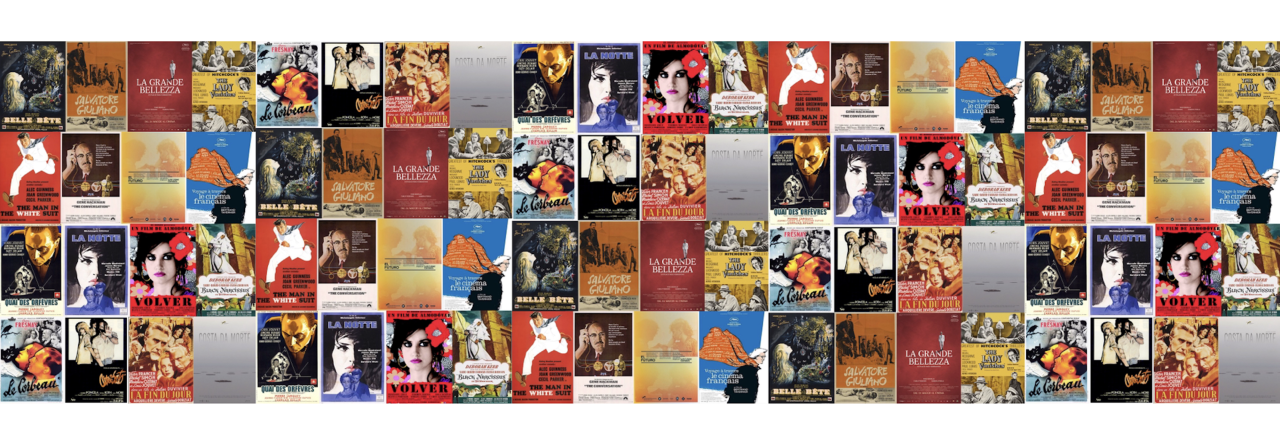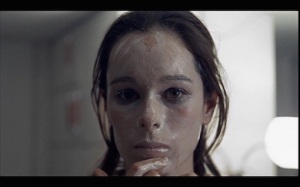
Director: Carlos Saura
Screenplay: Rafael Azcona, based on a story by Carlos Saura and Elías Querejeta
Cast: José Luis López Vázquez, Lina Canalejas, Fernando Delgado, Lola Cardona, María Clara Fernández de Loayza, Josefina Díaz, Encarna Paso, Pedro Sempson, Julieta Serrano.
Synopsis: 1973. Luis travels from Barcelona to fulfil his late mother’s wishes to have her remains interred in the family crypt in Segovia. The trip brings him face to face with the family members he stayed with during the Civil War and leads him to confront the memories and ghosts of his childhood.
Link: My original post on the film, from the old version of the blog.
My favourite of Saura’s films from this 1962-1979 period, La prima Angélica returns to the issue that preoccupies so much of his work: memory, and how it inflects our understanding of the past and present. As in El jardín de las delicias, José Luis López Vázquez portrays the lead character (Luis) in both adulthood and childhood, as familiar places and faces cause Luis to relive events from more than thirty years ago. Family ties set events in motion in both time periods: in 1973, Luis is travelling from Barcelona in order to fulfil his mother’s wish for her remains to be interred in the family crypt in Segovia; in the 1930s, Luis is taken to the safer Segovia to stay with his mother’s family (on the right, politically) while his parents return to Barcelona. We first see Luis-as-child when Luis-as-adult pulls his car to the side of the road when he sees Segovia in the distance, and he becomes lost in the memory of the first time he was at this roadside: his father’s car pulls up behind him, and his mother (dressed in 1930s attire) comforts Luis, trying to reassure him about his stay with her side of the family. As the Civil War developed, Barcelona became cut off, and Luis will see out the war separated from his parents and in the midst of a family from the ‘victorious’ side. His return to Segovia as an adult in his 40s shows how those war years shaped the person he became and why he now feels the need to confront the past.
Still living under the dictatorship, any discussion of the Civil War that diverged from what had become the official narrative was a taboo in Spain and the losing side was rendered invisible by the silence. In this context, Marvin D’Lugo observes that La prima Angélica stands as ‘the first compassionate view of the vanquished’:
‘In choosing the theme of interdicted history – the Civil War years as remembered by the child of Republican parents – Saura pursues more than just the external demons of censorship that had suppressed all but the triumphalist readings of the war. He confronts the psychological and ethical traumas that the official distortions of the history of the war years in public discourse had conveniently ignored but that had scarred and even paralysed a generation of Spaniards’ (1991: 115-116).
In the context of Spain today – where the contentious issue of ‘historical memory’ has been openly fought over for some time – Ángel Quintana argues that Luis ‘gains symbolic force as the first fictional character that recovers the power of memory as an act of resurrection of the hidden and of justice to that which is silenced’ (2008: 95).
The past is not simply evoked, but reenacted. Although it is perhaps more accurate to say that it is being ‘relived’ because these are not the theatrical stagings of El jardín de las delicias, but rather Luis weaving in and out of the present and the past as the return to the family apartment envelops him in memories. As with his habit of having Geraldine Chaplin play multiple roles, here Saura has several actors play more than one character: Lina Canalejas plays Angélica’s mother in the 1930s segments and the grown-up Angélica in the present; María Clara Fernández de Loayza plays Angélica in the 1930s and the grown-up Angélica’s daughter (also called Angélica) in the present; and Fernando Delgado plays Angélica’s father and later her husband (although the grown-up Angélica shows Luis a photo of her father to prove that there is no resemblance to her husband). This ‘doubling’ obviously aids the transition back and forth in Luis’s memory onscreen, which occasionally becomes confusing when Luis loses himself in the past, and the lines between the two eras become deliberately indistinct.
López Vázquez is the only actor to play the same character in both eras. Luis-as-child is distinguished by voice, body language, and facial expression: for example, López Vázquez tucks his chin down so that he is looking up (his eyes wide), serving not only to indicate the shy and withdrawn nature of the boy, but also to make the actor seem physically smaller. One particular sequence that I like comes almost halfway into the film, at the point when Luis has carried out his mother’s wishes and is now driving back to Barcelona. He stops at the same roadside that we saw at the start of the film, and the same memory plays out again. But this time, instead of being immersed in the memory, reliving it, he observes it from the other side of the road; in revisiting the sites of childhood trauma, he has acquired some of the distance required to review the past objectively. He turns his car around and heads back to Segovia to confront the past head on.
References:
D’Lugo, M (1991) – The Films of Carlos Saura: The Practice of Seeing, Princeton: Princeton University Press.
Quintana, À. (2008) – ‘A Poetics of Splitting: Memory and Identity in La prima Angélica (Carlos Saura, 1974)’, in Burning Darkness: A Half Century of Spanish Cinema, edited by J.R. Resina, Albany, NY: State University of New York Press, pp.83-96.








